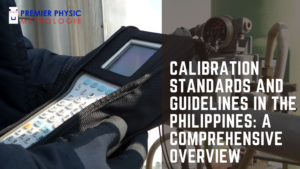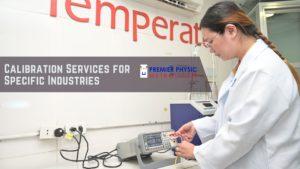In an era defined by increasing environmental awareness and stringent regulations, the accurate and reliable collection of environmental data has never been more critical. From monitoring air and water quality to assessing soil conditions and tracking climate change, the information gathered through environmental monitoring systems forms the bedrock upon which informed decisions, effective policies, and crucial compliance measures are built. At the heart of ensuring this data’s integrity lies the indispensable process of calibration. This comprehensive exploration delves into the fundamental role of calibration in environmental monitoring and compliance, elucidating its significance, outlining key methods, and underscoring its direct impact on data accuracy, regulatory adherence, and ultimately, the health of our planet.
Understanding Environmental Monitoring and its Importance:
Environmental monitoring encompasses the systematic collection, analysis, and interpretation of environmental data. This includes a wide array of parameters, such as air pollutants (particulate matter, ozone, nitrogen oxides, sulfur dioxide), water quality indicators (pH, dissolved oxygen, heavy metals, pollutants), soil contaminants, noise levels, radiation levels, and meteorological conditions. The importance of environmental monitoring stems from several key factors:
- Regulatory Compliance: Numerous environmental regulations at local, national, and international levels mandate the monitoring of specific environmental parameters. Accurate data is essential for demonstrating compliance with these regulations and avoiding penalties, fines, and legal repercussions.
- Environmental Protection: Monitoring data provides crucial insights into the state of the environment, allowing for the identification of pollution sources, the assessment of environmental impacts, and the tracking of the effectiveness of conservation efforts.
- Public Health: Environmental monitoring plays a vital role in safeguarding public health by identifying potential health hazards in the air, water, and soil, enabling timely interventions to prevent illness and disease.
- Scientific Research: Reliable environmental data is fundamental for scientific research aimed at understanding environmental processes, assessing the impacts of human activities, and developing solutions to environmental 1 challenges. 1. sustainability-directory.com sustainability-directory.com
- Resource Management: Monitoring data informs the sustainable management of natural resources, such as water, forests, and fisheries, by providing information on their availability, quality, and the pressures they face.
- Disaster Preparedness: Environmental monitoring can contribute to disaster preparedness by tracking weather patterns, detecting early signs of environmental hazards, and assessing the impacts of natural disasters.
- Operational Efficiency: For industries, environmental monitoring can help optimize processes, reduce waste, and improve resource efficiency, contributing to both environmental sustainability and economic benefits.
- Public Perception and Reputation: Demonstrating a commitment to environmental monitoring and compliance can enhance a company’s public image and build trust with stakeholders.
The Critical Role of Calibration in Ensuring Data Accuracy:
Calibration is the process of comparing a measurement instrument to a known standard of higher accuracy to detect and correct any discrepancies in its readings. In the context of environmental monitoring, calibration is not merely a technical procedure; it is the bedrock upon which the reliability and validity of all collected data rest. Without proper and regular calibration, the measurements obtained from environmental monitoring instruments can be skewed, inaccurate, and ultimately, meaningless or even misleading. This can lead to flawed environmental assessments, incorrect policy decisions, and a failure to identify and address critical environmental problems.
The significance of calibration in environmental monitoring can be highlighted through the following points:
- Ensuring Measurement Accuracy: Calibration directly ensures that the readings obtained from environmental sensors, analyzers, and detectors accurately reflect the true environmental conditions being measured. This accuracy is paramount for drawing valid conclusions and making informed decisions.
- Maintaining Data Integrity: Regularly calibrated instruments provide consistent and reliable data over time, contributing to the overall integrity of environmental datasets. This is particularly crucial for long-term monitoring programs aimed at identifying trends and changes in environmental parameters.
- Quality Assurance: Calibration is a fundamental component of quality assurance in environmental monitoring. By reducing the risk of erroneous measurements, calibrated instruments enhance the overall quality and trustworthiness of the collected data.
- Regulatory Compliance: Many environmental regulations explicitly require the use of calibrated instruments for monitoring and reporting. Demonstrating that monitoring equipment is properly calibrated is essential for meeting regulatory requirements and avoiding non-compliance issues.
- Scientific Credibility: In scientific research, the reliability of findings hinges on the accuracy of the data collected. Calibrated instruments enhance the credibility of research results and contribute to the advancement of environmental science.
- Preventing Costly Errors: Inaccurate environmental data can lead to costly errors in decision-making, such as implementing ineffective pollution control measures or mismanaging natural resources. Calibration helps prevent these errors by ensuring the data used is reliable.
- Ensuring Public Safety: Accurate monitoring of pollutants and environmental hazards is crucial for protecting public health. Calibrated instruments provide the reliable data needed to identify risks and implement appropriate safety measures.
- Facilitating Data Comparison: When multiple monitoring stations or instruments are used, calibration ensures that the data collected is comparable and consistent across different locations and over time.
The Calibration Process: Key Steps and Considerations:
The calibration process for environmental monitoring instruments typically involves several key steps:
- Reference Standards: Calibration begins with the use of reference standards – instruments or materials with precisely known and accurate values for the parameter being measured. These standards are traceable to national or international measurement standards, ensuring a high level of accuracy.
- Comparison: The instrument being calibrated is compared to the reference standard under controlled conditions. Any discrepancies between the instrument’s readings and the known values of the standard are carefully noted.
- Adjustment: If significant discrepancies are found, adjustments are made to the instrument to bring its measurements into alignment with the reference standard. These adjustments can involve altering electronic settings, mechanical components, or software parameters, depending on the type of instrument.
- Testing and Verification: After adjustments, the instrument is tested again against the reference standard to verify that its measurements now fall within acceptable tolerance limits. This step ensures the effectiveness of the calibration adjustments.
- Documentation: Thorough documentation of the entire calibration process is essential. This includes recording the instrument’s initial readings, the reference standards used, any adjustments made, the final calibrated values, the date of calibration, and the personnel who performed the calibration. This documentation serves as an audit trail for quality control and regulatory compliance.
- Calibration Interval: Environmental monitoring instruments should be calibrated at regular intervals to account for potential drift, wear and tear, and the influence of environmental conditions on their accuracy over time. The appropriate calibration interval depends on factors such as the instrument’s type, manufacturer recommendations, frequency of use, and regulatory requirements.
Calibration Methods for Environmental Monitoring Instruments:
The specific calibration methods employed depend on the type of environmental monitoring instrument and the parameter being measured. Some common calibration methods include:
- Direct Comparison: This involves directly comparing the readings of the instrument being calibrated with a calibrated reference standard under the same environmental conditions.
- Standard Solutions/Gases: For chemical analysis instruments (e.g., pH meters, gas analyzers), calibration often involves using standard solutions or gases with known concentrations of the analyte being measured.
- Multipoint Calibration: This method involves calibrating the instrument at several different points across its measurement range to ensure accuracy throughout the entire operating range.
- Span and Zero Adjustment: Many instruments have adjustments for setting the zero point and the span (the difference between the low and high ends of the measurement range) to match the reference standards.
- In-Situ Calibration: In some cases, particularly for large networks of sensors, in-situ calibration techniques may be used, where sensors are calibrated against reference stations or through statistical methods that account for environmental factors.
- Remote Calibration: With advancements in technology, some environmental monitoring instruments can be calibrated remotely via wireless communication.
The Link Between Calibration and Environmental Compliance:
Calibration is not just a good practice in environmental monitoring; it is often a mandatory requirement for regulatory compliance. Environmental regulations frequently specify the types of monitoring equipment that must be used, the frequency of calibration, and the standards to which calibration must be traceable. Failure to adhere to these calibration requirements can result in:
- Invalid Data: Uncalibrated instruments can produce inaccurate data, which may not be accepted by regulatory agencies.
- Non-Compliance Notices: Regulatory bodies can issue notices of non-compliance if monitoring equipment is not properly calibrated.
- Fines and Penalties: Failure to comply with calibration requirements can lead to significant financial penalties.
- Legal Action: In severe cases of non-compliance, legal action may be taken against the responsible parties.
- Reputational Damage: Companies found to be using uncalibrated monitoring equipment may suffer damage to their public image and lose the trust of stakeholders.
Best Practices for Calibration in Environmental Monitoring:
To ensure the accuracy and reliability of environmental monitoring data and maintain regulatory compliance, organizations should adopt the following best practices for calibration:
- Establish a Calibration Program: Develop a comprehensive calibration program that outlines the instruments requiring calibration, the calibration frequency, the methods to be used, and the responsible personnel.
- Use Traceable Standards: Ensure that all reference standards used for calibration are traceable to recognized national or international measurement standards (e.g., NIST, ISO).
- Follow Manufacturer Guidelines: Adhere to the calibration procedures and intervals recommended by the instrument manufacturers.
- Maintain Calibration Records: Keep detailed and organized records of all calibration activities, including dates, methods, standards used, results, and personnel involved.
- Regularly Audit Calibration Procedures: Periodically review and audit the calibration program to ensure its effectiveness and compliance with relevant regulations.
- Train Personnel: Ensure that all personnel involved in calibration are properly trained and competent in the relevant procedures.
- Control Environmental Conditions: Perform calibrations under controlled environmental conditions (temperature, humidity, pressure) as specified in calibration protocols.
- Use Qualified Calibration Service Providers: If using external calibration services, ensure that the providers are qualified, accredited, and can provide traceable calibration certificates.
- Implement a System for Identifying and Managing Out-of-Calibration Equipment: Establish procedures for identifying instruments that are out of calibration and removing them from service until they are properly calibrated.
- Consider the Impact of Environmental Factors on Calibration: Recognize that environmental conditions can affect the calibration process itself and take appropriate measures to mitigate these effects.
The Future of Calibration in Environmental Monitoring:
The field of environmental monitoring is constantly evolving, with advancements in sensor technology, automation, and data analytics. The future of calibration in this domain is likely to see:
- Smart Sensors with Self-Calibration Capabilities: The development of sensors that can perform self-calibration or automated drift correction will reduce the need for manual calibration and improve data reliability.
- Wireless Calibration Technologies: Remote calibration of sensors via wireless networks will become more prevalent, simplifying the calibration process for distributed monitoring networks.
- Integration with IoT and Cloud Platforms: Calibration data and schedules will be increasingly integrated with IoT devices and cloud-based environmental monitoring platforms, enabling centralized management and analysis.
- AI-Powered Calibration Optimization: Artificial intelligence algorithms may be used to optimize calibration intervals and procedures based on sensor performance and environmental conditions.
- Standardized Calibration Protocols for Emerging Sensor Technologies: As new types of environmental sensors are developed (e.g., low-cost sensors, nanosensors), the development of standardized calibration protocols will be crucial for ensuring data quality.
Conclusion:
Calibration is not merely a technical detail in environmental monitoring; it is the very foundation of accurate and reliable environmental data. Its role in ensuring regulatory compliance, protecting public health, and informing sound environmental decisions cannot be overstated. By understanding the importance of calibration, adhering to best practices, and embracing future advancements in calibration technologies, we can ensure that environmental monitoring efforts provide the trustworthy data needed to safeguard our planet and build a sustainable future. The integrity of environmental data, and ultimately our ability to address environmental challenges effectively, hinges on the unwavering commitment to accurate and traceable calibration practices.




